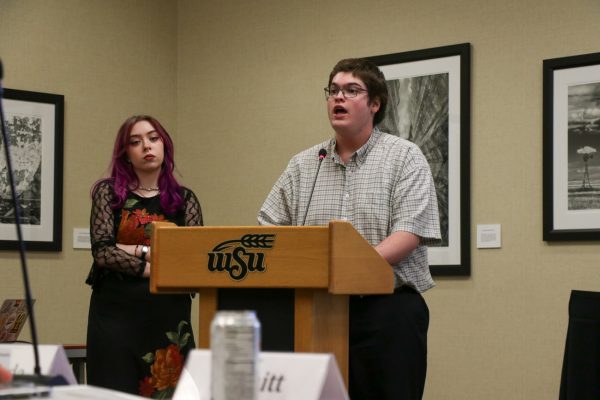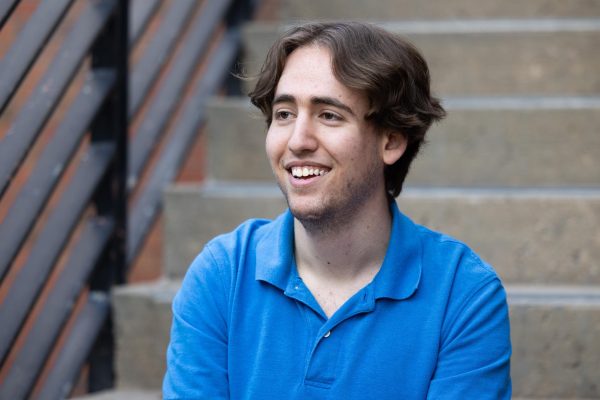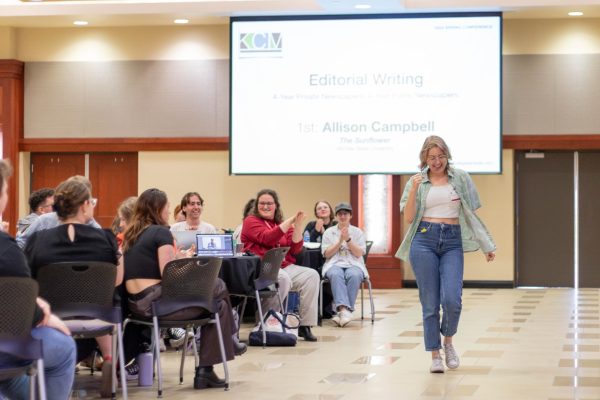LTTE: Inequality, lack of transparency plague infrastructure initiative
This week, students will vote on a proposal to increase their fees by $6 per credit hour. The fee increase will enable WSU to bond $38.6 million dollars for infrastructure upgrades with more than half of that money, $20 million, going towards a new business school, Woolsey Hall. The faculty of the history department are dismayed not only with the campaign’s contents, but especially with how this ‘student-driven initiative’ has been conducted. We, therefore, urge students take the following concerns into consideration as they vote.
As with other initiatives in recent years, we believe the process has not been transparent. Two years ago, when student fees were raised to pay for the new YMCA, administrators stated WSU would not be able to bond money for the foreseeable future. However, plans for a new business building with a $50 million-dollar price tag have been in the works for years. WSU Foundation President Elizabeth King has explained that donors were told “from the beginning” that the remaining funds would come from students (The Sunflower, February 22, 2019). Why were students only told about the proposed fee hike recently? Why was the student referendum not conducted first, to see if there was student support for financing a new business building through fees, before promising donors something that was not theirs to give?
More to the point: has the administration even demonstrated the need for a new building? If $30 million dollars has been raised, why can we not build a $30 million-dollar building? Why not renovate Clinton Hall with the $30 million dollars?
As the Sunflower reported, while administrators characterize the initiative as ‘student-driven,’ a student steering committee was only appointed this year, and there are questions as to whether it is simply a university PR mouthpiece or even has any say in decision-making (The Sunflower, February 25, 2019). Regardless, bringing students in so late to a process claimed to be ‘student-driven’ is disingenuous: that the signs erected by the committee read ‘Vote Yes!’ only underline these concerns.
The inequality built into the campaign is also deeply troubling. Raising money for the new business building seems to be the main goal and other projects have been tacked on to make the fee increase more palatable. But as the Sunflower has reported (February 21, 2019), students from other colleges will carry most of the financial burden: Liberal Arts & Sciences, for example, while making up 1/3 of the student body — and thus 1/3 of the fees raised — will see little more than 2 percent of the total money generated put towards their infrastructure priorities. If the goal is to distribute the financial burdens equally, should not the benefits be distributed equally as well?
We especially object to the threat to pursue another referendum should the first one fail, one that would only see business students vote on a program-specific $30-$35 per credit hour fee increase to pay for the new building. This plan is a scare tactic to frighten business students into voting ‘yes’ for the initial proposal, in fear their fees will increase dramatically should it fail. We find this to be a bad faith decision, one that could potentially make our business school prohibitively expensive, thus hurting us doubly: increased costs now and declining enrollment later. As a public institution priding itself on affordability, we should be looking for ways to keep costs down, not increase them.
For these reasons, the History Department faculty urge students to carefully consider the proposed student fee increase. We do not believe this is a ‘student-driven’ initiative nor that this is an equitable distribution of resources, and we especially do not feel the process has been transparent. While we agree that it will be problematic to return to donors afterwards, proper leadership could have forestalled this situation by not promising what was not already given. Generous donors have already raised an enormous sum of money that could be used to upgrade existing facilities or invest in student scholarships. If they are committed to supporting the school and its students, it should not matter whether their names grace a new building. We believe that WSU should be investing in its people, not its buildings.
Signed,
The History Department Faculty












